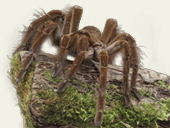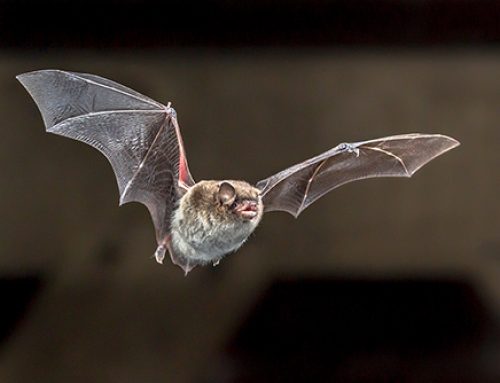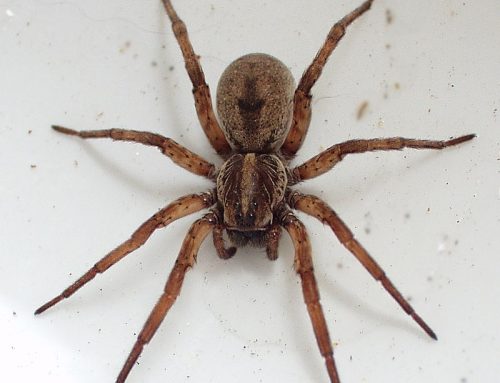Author’s note: The Amazing Spider-Man hit the theaters earlier this month, so PCT thought we would take a look at the famous franchise that fused man and spider together and created an American institution.
The demand for teenage comic books surged in the early 1960s, due in part by the success of such series as Captain America, The Fantastic Four and The Incredible Hulk. Marvel Comics czar (then writer) Stan Lee set out to meet the demand, and he was thirsty for ideas. His previous ideas had been huge hits with the young adult audience, and America’s youth were in a superhero frenzy. But Lee wanted to satisfy them with something different. He wanted to redefine the notion of a superhero and a superhero story. He wanted a story that would be truly realistic.
Specifically, Lee wanted to really reach his audience by creating a superhero with whom the kids could identify. All the fans found the Hulk’s crazed fits of physical rage enthralling and read with awe as Thor’s hammer wielded mystical alien powers to flatten semi trucks into pancakes. But let’s face it, what 13-year-old can truly identify with a rabid green lunatic in ripped pants, or an alien Greek god? Captain America came close; he had once been a wimp. But after an experimental medical procedure during World War II to create the world’s first super solider, the Captain had been cured of his wimpiness forever. But for the leagues of geeky, scrawny kids in the late ’50s and early ’60s, trying to look tough with Brylcreem, pleated pants and Marlboros, Captain America’s physical prowess was no consolation — his fans remained geeky and scrawny, and more aware of it than ever.
In a 2002 interview with Kevin Smith on Mutants, Monsters, & Marvels, Stan Lee said that his next superhero would “not look like Captain America, but an average guy.” He wanted a superhero that the geeky kid with skinny arms could relate to, a superhero who, in addition to fighting the bad guys with super powers, would simultaneously grapple with insecurity, rejection, loneliness, awkwardness, girl troubles and all the other struggles of a typical adolescent.
Creating a Superhero. But to make this new character complete, Lee had to come up with a superhero. “In superheroes the most important thing is to (think of) a new power,” says Lee. “And you run out of powers. A guy can fly…what’s left?”
As a young boy growing up in New York, Lee had read a pulp magazine called The Spider, though he said that’s not what gave him the idea. Fast forward to 1962, during his idea search, he saw a spider crawling up a wall. An idea began to take hold. “I figured if a guy can stick to walls and walk like an insect…” His mind began to run with the idea. Different names popped into his head. Mosquito Man. Insect Man. None of them grabbed him. Then the light bulb went off: Spider-Man. “Spider-Man sounded dramatic to me…Then I remembered that (pulp) magazine!”
Lee devised the premise of his shy, nerdy, awkward teenage character — whom he named Peter Parker — as an orphan who is raised by his aunt and uncle. While attending a science exhibit on a school field trip, Parker is bitten by a radioactive spider. Soon, Parker begins to develop spider-like qualities. He exhibits incredible speed, agility, and balance, superior strength, a “spidey sense” that affords him greater mental intuition, and the ability to walk on walls and ceilings.
|
Eager to showcase his new abilities (and finally earn some much needed praise), Parker uses his science mind to create a masked suit — equipped with devices near his wrists that fire his signature adhesive webbing — and turns himself into a public spectacle. But after he fails to use his newfound powers to save his uncle from being killed by a street thug, a guilt-ridden Parker devotes his powers and energies to fighting crime.
To the Magazine Rack. Stan Lee pitched his Spider-Man idea to Marvel publisher Martin Goldman, and received a prompt response: “It’s the dumbest idea I’ve ever heard.”
Goldman had been on board with every pitch Lee had presented to him up to that point, such as the Fantastic Four and The Incredible Hulk. But with Spider-Man, as Lee recalls, “…he said I was crazy.” The biggest sticking point for Goldman was the very idea that Lee saw as revolutionary: a superhero with human problems and human insecurities. Lee reflects on Goldman’s reaction: A teenage superhero? With adolescent problems? And pimples?
Goldman would not budge, which posed a central problem for Lee: how to get the story published? Lee concocted a possible solution: expose Spider-Man to the world through the back door. In the summer of 1962, Lee was writing for a dying Marvel publication called Amazing Fantasy, a collection of science fiction stories for older readers. “I thought they were great, but they didn’t feature men in tights, and that’s what the public wanted.” The series was cancelled, with the final issue slated for release in August.
Lee saw his opportunity and his strategy. Rather than immediately push for a full Spider-Man series, give Spider-Man a cameo in the final issue of Amazing Fantasy. His logic: who cares what is included in the last issue of a series? There is nothing to lose. Goldman relented.
Lee’s next task was to turn his character from concept to ink, and he needed to do it quickly. He initially recruited the help of artist Jack Kirby, and instructed him, “Don’t make him look like Captain America, but an average guy.” Despite the instruction, Kirby made Spider-Man look too buff and too bold. With no time to wait on draft after draft, Lee turned to now-legendary Marvel illustrator Steve Ditko, who captured Lee’s vision perfectly, making the character look like “people you met on the street.”
Spider-Man made his debut to the world in the August 1962 issue of Amazing Fantasy #15 (selling for 12 cents), and Lee and Ditko (now considered Spider-Man’s co-creator) went on with their lives and left the rest up to fate. “(Ditko) did a beautiful job…we put it on the cover of the last issue of Amazing Fantasy…then forgot about it.”
Nine months later, after sales figures had been released, Lee got a knock on his door. It was Martin Goldman. With tongue in cheek, and sporting a sly, resigned smile, Goldman said, “Stan, do you remember that Spider-Man character that we liked so much? How about doing a series?”
|
The Legacy. In March 1963, The Amazing Spider-Manhit the shelves, and while Spider-Man’s original venue, Amazing Fantasy, has now been extinct for nearly 50 years, the Spider-Man series has continued to evolve and take on different incarnations up to the present day.
Lee credits different factors to the series’ success. First, his storyline, coupled with Ditko’s artwork, meshed immediately. Lee gives much credit to Ditko. “Visually, the way Steve would have him crawling walls and swinging on webs…it all came together.” The two co-creators hit the jackpot at creating a timeless superhero.
And yet it is Lee’s original vision of a superhero who struggles with personal problems outside of his tights that Lee credits as the key to the franchise’s success. Unlike Captain America, Peter Parker became a superhero but remained a nerd. He remained awkward and insecure. As Lee says, speaking for his audience: “I can relate to him. He was shy. He wasn’t that successful with girls. That could be me.” And so any adolescent boy can see himself in the character. Despite scaling buildings and saving New York from the hands of such legendary villains as The Green Goblin and The Sandman, he would remain the kid next door who was too shy to ask the pretty girl from math class out on a date.
Furthermore, the fact that Spider-Man wore a mask that completely covered his face was unlike previous Marvel characters, and that only helped readers identify with him. Imagining oneself as Captain America takes a little more creative license if you look nothing like him, in that his face is at least partially visible. But Spider-Man’s face is hidden — the reader can easily imagine himself behind the mask.
But it is not just the audience’s ability to relate to Parker that accounts for the comic’s success, according to Lee, but also the overall sense of realism that the comic conveys. Affecting a sense of realism was one of Lee’s goals for the comic from the very beginning, in addition to inviting the audience to relate to Parker. One of Lee’s metrics in character development is best expressed in his own words: “If those people really existed, what would their lives be like?” And he enforces the critical idea that fantasy and science fiction are much more effective when character motives, modes of behavior, and interactions are captured as realistically as possible, as he says: “We know we’re doing fantasy…guys who can fly and what not…but write them as realistically as possible.” So Spider-Man not only excites, but touches home in a way that is believable and relevant.
And so, five decades later, comic fans continue to root for the pimple-faced nerd behind the masked spider costume, watching as he swings from skyscraper to skyscraper in pursuit of bad guys, imagining, in the very secret recesses of their own thoughts, that as they make a week-kneed attempt at asking the girl from math class out on a date, they can jumpstart their confidence with one piece of private fantasy: I am Spider-Man.
Spider Facts That Make You Say…WOW!
- All spiders are poisonous, although only a few species, like the Brazilian wanderer, black widow and brown recluse, are dangerous or lethal.
- Proportionately speaking, spider silk is twice as strong as steel. In fact, spider silk, proportionately speaking, is the strongest material known to man.
- Spider silk is so strong that scientists are studying it as a potential replacement for Kevlar in bullet-proof vests.
- A strand of spider web has more potential energy than the nuclear bomb dropped on Nagasaki.
- Spiders can work equally effective in great atmospheric pressure or in a total vacuum.
- In microgravity, on a 2001 mission aboard the Space Shuttle Atlantis (STS-98), instead of creating webs, spiders built complex three-dimensional silk tunnels.
Source: See below
Originall Article Posted from PCT Magazine Online.
Joe Saccany is a freelance writer based in Cleveland. He can be reached at jsaccany@giemedia.com.
References
Burroughs, Dr. Clyde. “Spiders.” Hamtwoslices. www.hamtwoslices.net/spiders.htm.
Dunn, Trey. “Spiders on Drugs.” Trinity University. Ed. Trey Dunn, Trinity University. www.trinity.edu/jdunn/spiderdrugs.htm.
Facts About Spiders. 2004. www.types-of-spiders.org.uk/facts-about-spider.htm.
“Fun Spider Facts for Kids.” Science Kids. www.sciencekids.co.nz/sciencefacts/animals/spider.html.
Smith, Kevin. “Stan Lee’s Mutants, Monsters, & Marvels with Kevin Smith. Feature 1: Creating Spider-Man.” www.youtube.com. 2/22/02.
“Spiders.” Kidzone. DLTK’s Sites. www.kidzone.ws/iw/spiders/index.htm.






